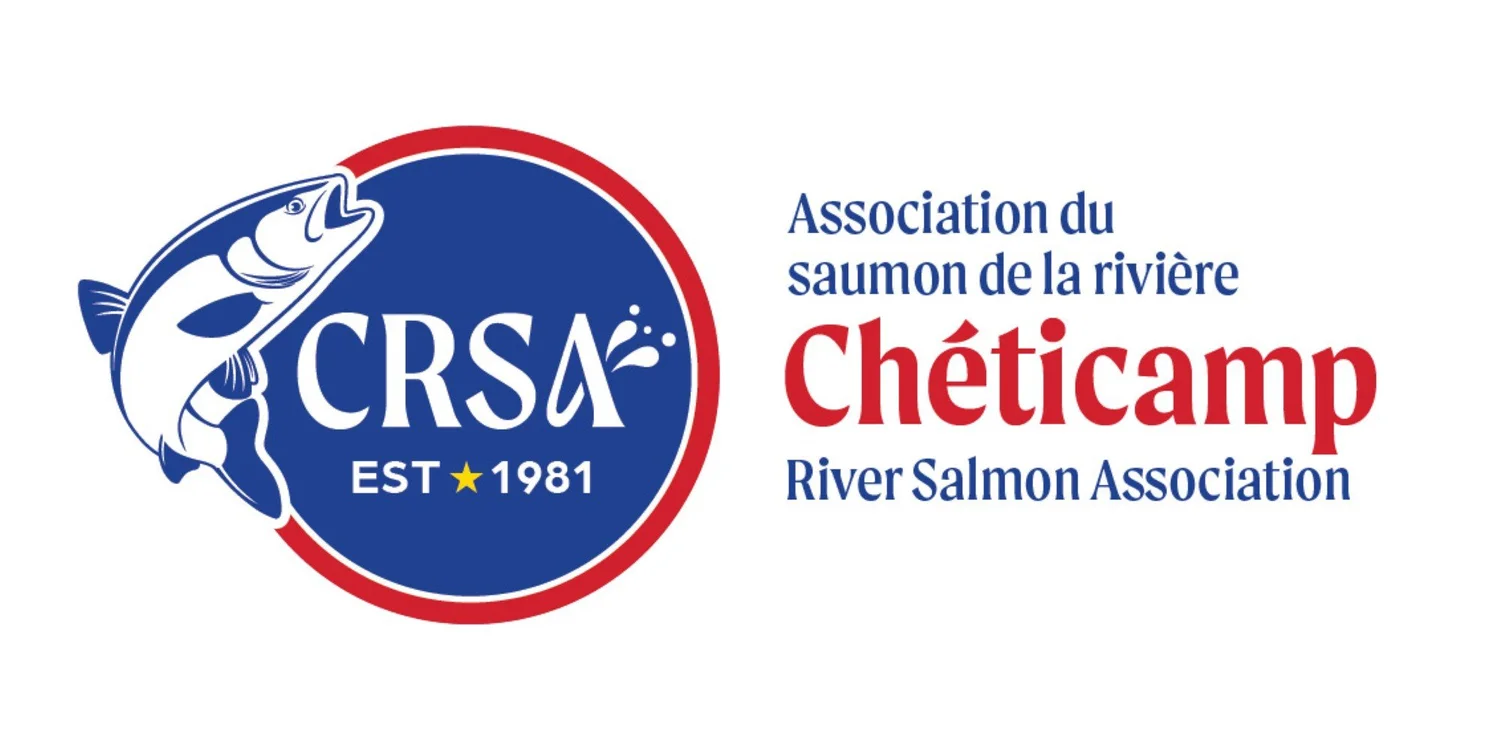Cheticamp River restoration project wraps up after 5 years
The Cheticamp River Salmon Association and its Parks Canada partners completed their fifth and final year of instream work on the Cheticamp River in August. This year’s work has brought the total number of instream structures installed over the years to 70. The majority of these structures - mostly rock retarding bars (or groynes) and deflectors - were installed in sections of the lower river where the channel had become critically overwidened.
Archie Doucette (left, Parks Canada) and Charles MacInnis (project consultant in charge of restoration design and construction of instream structures) oversee work at the Faribault Brook site.
Catherine Thompson, CRSA’s Crew Supervisor for its student habitat restoration work crew, was on site to help with traffic control during this year’s instream work on the Cheticamp River.
The 2018 instream work focused on three sites on the lower Cheticamp River: Faribault Brook (work took place on the Cheticamp River, above the confluence with Faribault Brook), Below Fence Pool, and at Petit Cap. Fish passage at these sites was not only limited by overwidened channels, but also split thalwegs, mid channel diagonal bars, and excess bedload deposition.
These three sites had all been worked on in previous years of the Cheticamp River project, but revisiting them was important in order to address changes to the river that occurred as a result of a major flood three years ago (August, 2015). By adding an additional five instream structures (2 rock retarding bars, 2 deflectors, and a sill) and carrying out maintenance to some of the previously installed structures (4 rock retarding bars and a deflector), the restoration team is hoping to improve fish passage in some cases, as well as maintain the benefits achieved during the first few years of the project.
Charles MacInnis overseeing maintenance work to a deflector below Fence Pool.
The uppermost structure installed as part of the Cheticamp River restoration project (view looking downstream). This rock deflector was installed in August, 2018 above Faribault Brook.
Seeing this project through to completion has been a major achievement for the Cheticamp River Salmon Association, and the timing was crucial. Human impacts (including past logging - pre the formation of Cape Breton Highlands National Park) had resulted in the channel becoming drastically over-widened in places along the lower river. In low water conditions, these wide, shallow areas were creating significant problems for migrating salmon. And low water conditions – once uncommon during the spring salmon run – have become a regular occurrence. The current trend of warmer winters and drier springs combined with less rainfall, contributes to lower water levels and higher water temperatures during the salmon migration. Without intervention, these human induced environmental conditions would continue to impact Atlantic salmon and other migrating fish, and the Cheticamp River’s important spring salmon run and the recreational fishery that it supports would eventually be lost.
While the Cheticamp River restoration project wouldn’t have been possible without the support and collaboration from Parks Canada (Cape Breton Highlands National Park), a dedicated group of project partners who have supported the project since its start back in 2014 are also to thank for its success. These project contributors and funders include the Nova Scotia Salmon Association’s NSLC Adopt-a-Stream Program, the Atlantic Salmon Conservation Foundation, Sage Environmental Program, and the Atlantic Salmon Federation. Other funders who contributed to one or more years of the project include DFO’s Recreational Fisheries Partnership Program, Nova Scotia Power Inc., and Service Canada’s Canada Summer Jobs Program.
Allyson Heustis with the Atlantic Salmon Conservation Foundation (left) and Jillian Baker, CRSA’s Project Manager, during a site visit this summer.
Archie Doucette (Parks Canada), Rene Aucoin (CRSA President), and Charles MacInnis (Project consultant) (left to right) pose with signage from the Nova Scotia Salmon Association’s NSLC Adopt-a-Stream Program, one of the funders of the Cheticamp River restoration project.
While it won’t be building structures in the Cheticamp River again any time soon, the CRSA has no intention of sitting idle. The Association is already partnering with Parks Canada on a water temperature study of the river and the Cheticamp reservoir, and this fall the CRSA is proposing its first official salmon redd count (redds are fish spawning nests) on the Cheticamp River. Volunteers will be needed, and a training session will be held later this fall. More information on this will be made available in the coming weeks.






